This is an article I wrote some time ago in Afghanistan. You can read more about the fascinating wildlife of that country here:
We have over here a long bodied, stout insect that the Afghans call “Ghou zam bour” the Cow Bee. Named for its exceptional size this distinctive insect is actually a hornet and is a common sight throughout the country. I have photographed them from the very south of Afghanistan to the very north. It must be a pretty hearty representative of the bee family. I can personally attest to temperatures ranging from above 130 degrees Fahrenheit to well below zero. At nearly one inch in length and body as stout as your little finger this is a member of the Hymenoptera family to reckon with. But this is not a typical pollen gathering member of the tribe; there simply are not enough flowering plants in this country to support that lifestyle. The Cow Bee has other strategies.
Since this article was written some time ago I received a very informative note from Louis Sorkin B.C.E., Entomologist and Arachnologist at the American Museum of Natural History in NY. The “Cow Bee is actually an oriental hornet Vespa orientalis, a common hornet from the middle east, distributed from Africa to Pakistan / India and introduced in Madagascar.” You have to worry about their stings, not actually the bite. Hornets can pack a powerful sting.”
Shortly after I heard from a fellow in Iran who actually was bitten by one. As predicted it was terribly painful. But this gentlemen was informed by his Iranian friends that the bite would ensure two years of good luck. To date this claim is unverified!
Cow Bees do not build large paper like nests. They prefer burrowing out a den in the side of a dirt mound but I’ve seen their burrows dug into the flat ground and in the cracks of old concrete buildings. A crevice in the outer wall of a traditional Afghan mud home is a real favorite. Although I cannot attest to seeing these guys actually dig the burrow I have seen them industriously going about home improvement by removing debris and adding to the outer walls of their home in the way of our North American Mud Daubers by mixing saliva with dirt. The walls swirl out into unique shapes, but not all hives build them and some are content with very small ones.
Your ads will be inserted here by
Easy Plugin for AdSense.
Please go to the plugin admin page to
Paste your ad code OR
Suppress this ad slot.
Food gathering is varied activity. I’ve seen them attack ants, go after a lollipop, tear apart a cricket, and graze the surface of green leaves. The greedily attack fruit and are often found around dumpsters; in this harsh landscape animals take any opportunity present. Flowering plants have no attraction for these insects. They are actually hornets and besides preference, their morphology does not lend itself to pollen gathering. The Cow Bee has extremely large mandibles, plainly seen in the photos.
I cannot say what it is like to be stung by a Cow Bee, but I am certain that a bite from one of these guys will produce a respectable degree of pain. Yet despite their size and ferocious appearance the Cow Bee is not particularly aggressive, and thankfully so. I have spent numerous hours just inches away from a hive photographing their comings and goings. Not once have I even been threatened. The only time I ever even felt uneasy is when the heat of the day brings the hive activity to intense levels. At that point I discreetly leave the creatures to themselves.
The behavior of the insect is quite interesting. The animals exit the hive one to three or four at a time and briefly pause outside the opening; perhaps getting their bearing or warming up. The bee then flutters its wings for an instant and launches itself into the air. The Cow Bee is not a high flyer, though. They fly zigzag patterns very close to the ground, usually less than a foot away from the surface. Flying away from the hive or returning to it the bee maintains its “nap of the earth” behavior. I thought I had discovered the reason for this flight pattern when I witnessed one of these bees attack a large ant. It actually grabbed the ant and flew away with it, but dropped the insect seconds later. The ant had been carrying something and it could be that the bee was after the ant’s cargo. Shortly after this same episode I witness a cow bee buzzing closely over a trail of much smaller ants. Periodically it dive bombed the little creatures, but did not pick any one of them up. This behavior lasted for less than thirty seconds. The cow bee then seemed to lose interest and moved on. I’ve not seen either behavior repeated.
A feeding pattern I witnessed many times is something I call the “Cow Bee Graze.” I spent a pleasant morning one day observing a hive embedded in the mud wall of an Afghan army compound. As the bees emerged from their home they characteristically paused for a moment and then took to air and quickly zoomed close to the ground. All of the bees, those leaving the hive and those returning followed a distinct path. I trailed the bee traffic to a patch of greenery some one hundred meters away from the hive. There I watched and photographed the bees grazing or nibbling on the surface of the green leaves. They did not eat the leaf in the manner of a caterpillar. Grazing is about the best description I can come up with.
HOOAH
Jack

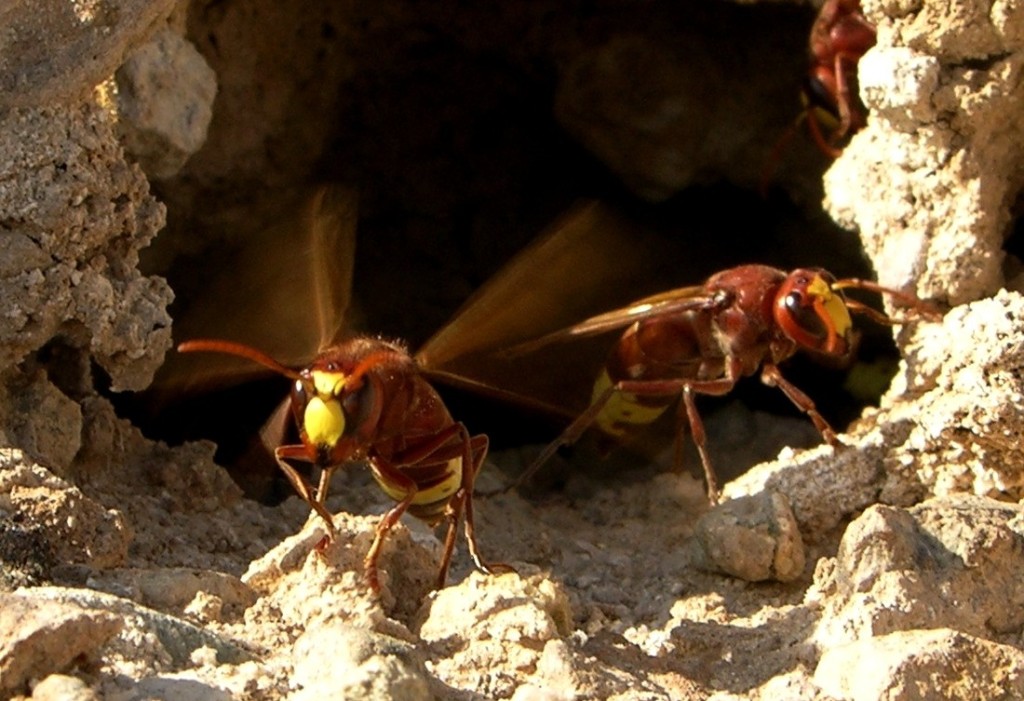
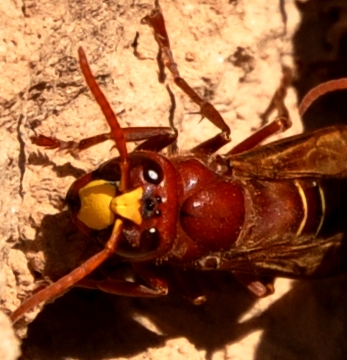
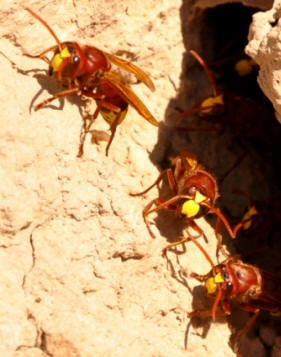

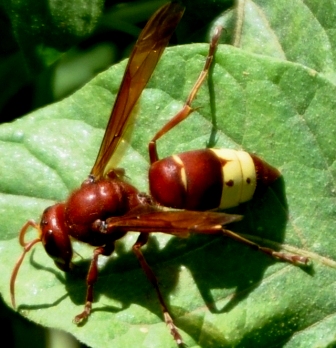
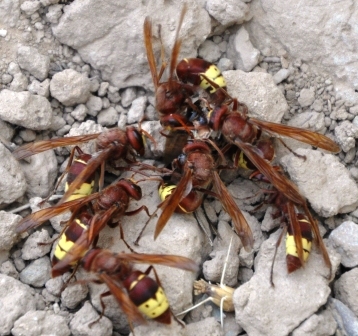
Leave a Reply
You must be logged in to post a comment.